"After Hong Kong, we went to Shanghai. They chose a land-based way of transportation. On the way, we decided to stop for a couple of days in the neighboring city of Guangzhou near Hong Kong. Below is a short story about what we managed to see there.
We traveled from Hong Kong to Guangzhou by train. As soon as we crossed the Hong Kong—China border, a lot changed immediately. My first impression was that we had arrived in a provincial remote town. Almost all the English-language signs disappeared, the Chinese around were dressed in simple, expressionless, "gray" clothes. The train station we were leaving was crowded with people and very dirty. Ahead of us was a difficult quest to find a hotel," says rufer and blogger Vadim Makhorov.
(38 photos in total)
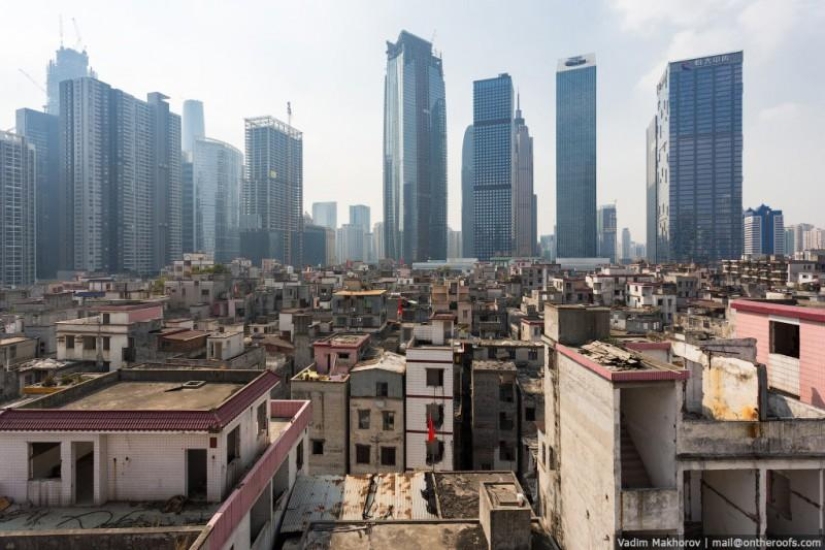 Source: LiveJournal/dedmaxopka
Source: LiveJournal/dedmaxopka
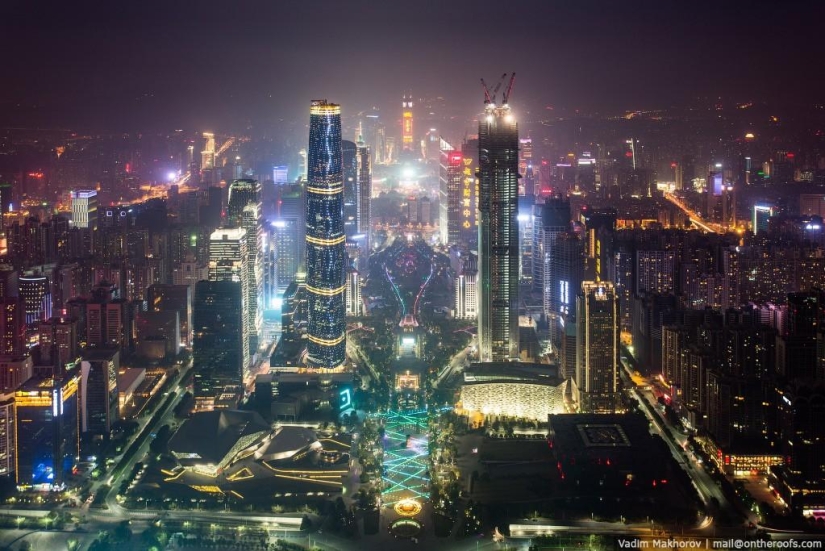
1. The atmosphere of provinciality did not leave me even after leaving the station. Hong Kong seemed bright, lively, diverse. Guangzhou after him created the opposite impression.
We had to find a hotel. It would seem that what could be easier than typing the address into the cards and following the route? But in fact, the label on the offline map led us to some residential area where no one had ever heard of our hotel. Moreover, no one around us understood English and could not help us in any way. Time was tending to the night, and we were thinking with big bags what to do. There was no Internet. We were saved then by a screenshot of the hotel reservation, where a map with the location of the hotel was depicted in a small but clear enough way. I still don't understand why the address in the reservation and the actual location of the hotel differed from each other.
We had a cheap hotel. Three-star, but cheap, like a hostel. Upon arrival, it turned out that our room, although large, has no windows. So the next day we woke up around 2 p.m. in total darkness. We took turns waking up, thinking it was still dark and morning had not come, and went to bed again until one of us looked at the clock.
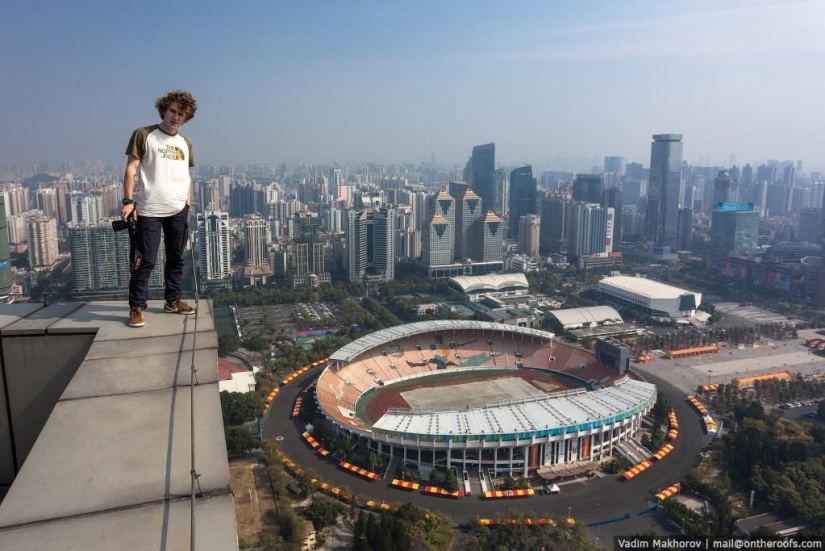
2. raskalov_vit
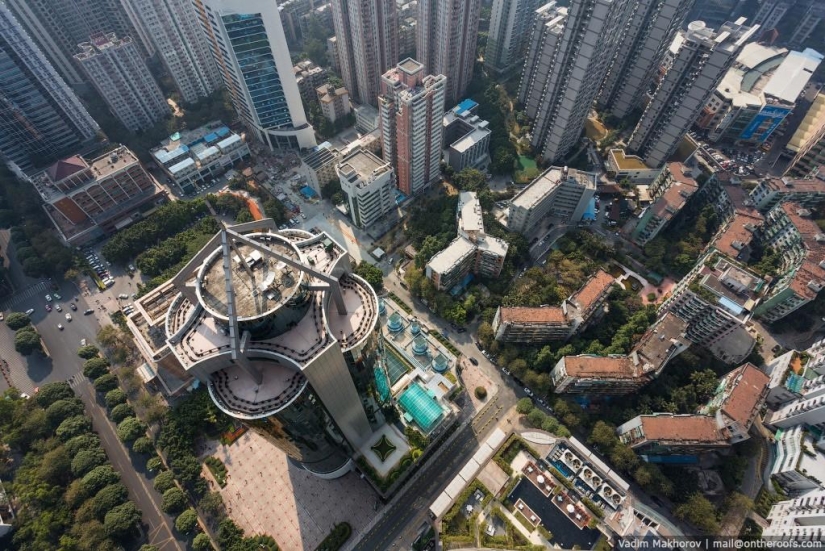
3. We didn't have much time, but we wanted to have time to climb the roofs and visit the Canton Tower.
A little help from the Internet.
Guangzhou is one of the 24 historical cities of China, with more than 2000 years of history. The city was founded in 862 BC. At the moment, more than 13 million people live in the city. Guangzhou is a city of subprovincial significance of the People's Republic of China, the capital of Guangdong Province, the political, economic, scientific, technical, educational, cultural and transport center of the whole of Southern China.
Currently, this city is the largest tourist, industrial, financial and transport center of China. Guangzhou is a world—famous center of light industry, producing products made of silk, cotton, jute, rami, as well as artificial fibers. Guangzhou has about 100 wholesale markets, various types of goods and hundreds of thousands of industrial enterprises, factories, factories (shipbuilding, automotive, production of equipment for the textile and food industries, newsprint, refined sugar, small household appliances, tires, bicycles, sports equipment, porcelain, cement and chemicals, electronic components). Products of traditional art and folk crafts (painted and cloisonne enamel, lacquer products, ivory carvings, fans, umbrellas, jade products, embroidery) are still produced here, as well as fish farming and fishing are developed.
The Canton Fair (CECF, Canton Fair) is held twice a year in Guangzhou — one of the most important events of the year in the world of production and trade. To date, this is the third industrial exhibition in the world in terms of the volume of transactions concluded.
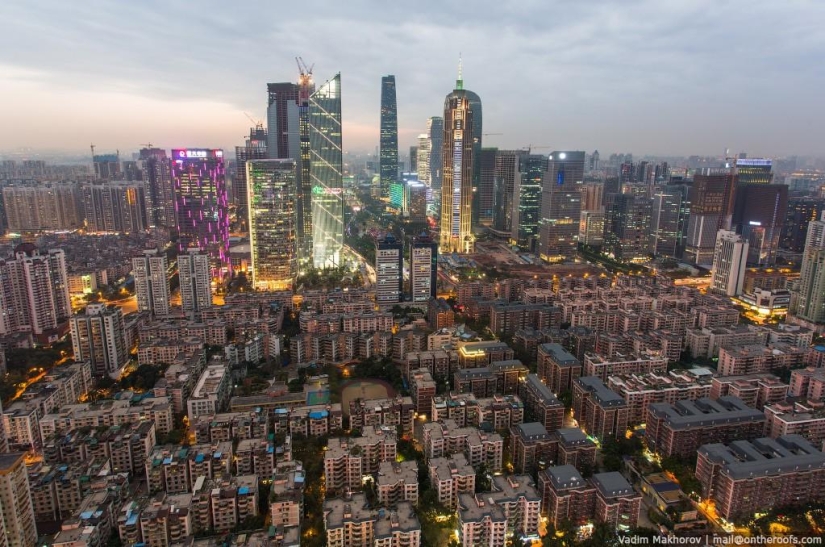
4. Residential areas on the background of skyscrapers.
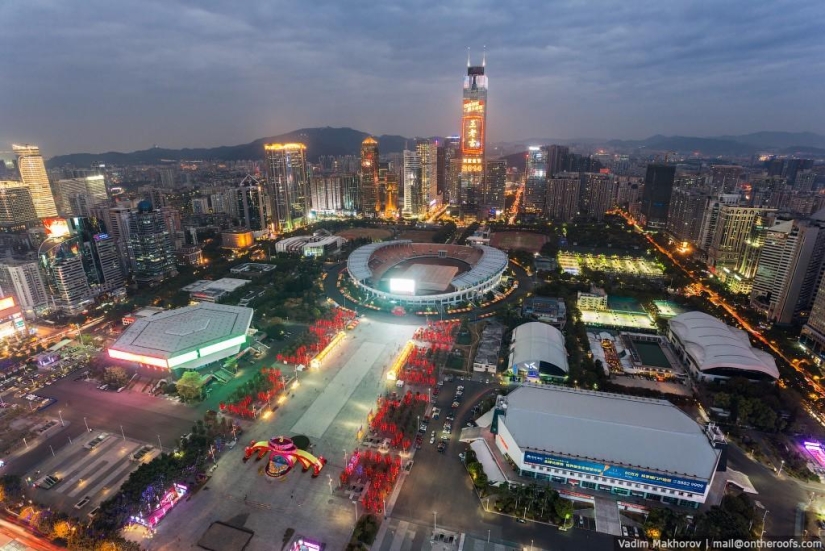
5. The Tinhe Sports Facilities complex, which includes the Tianhe Stadium, with a capacity of 60,000 people.
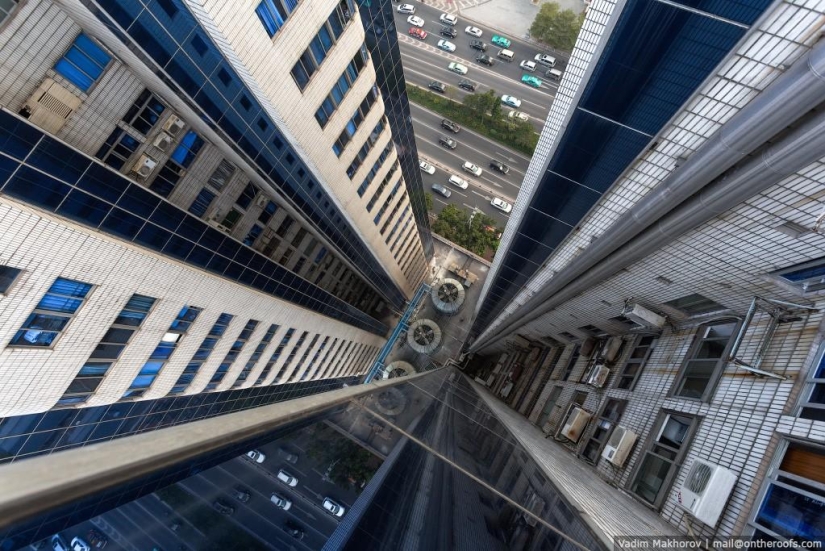
6.
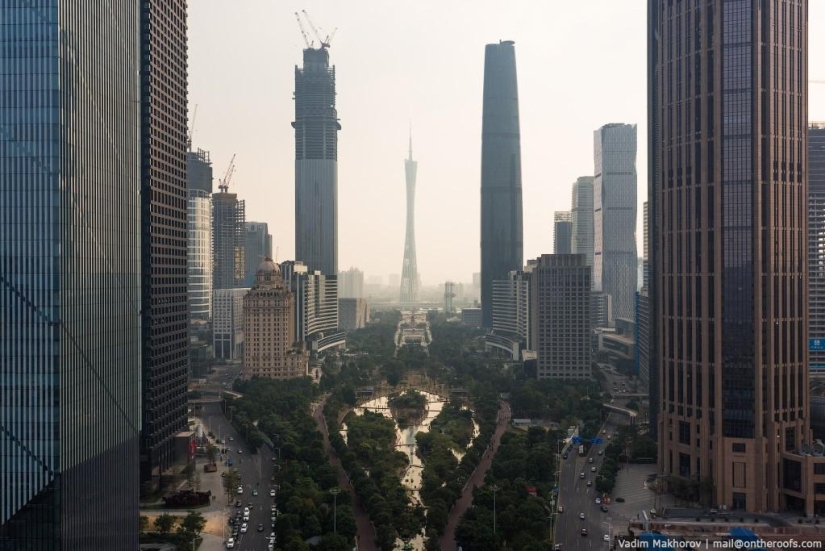
7. Because of the huge number of factories, there is a thick smog over the city. There is no smog here only on weekends and holidays. In the center of the frame you can see the Canton Tower.
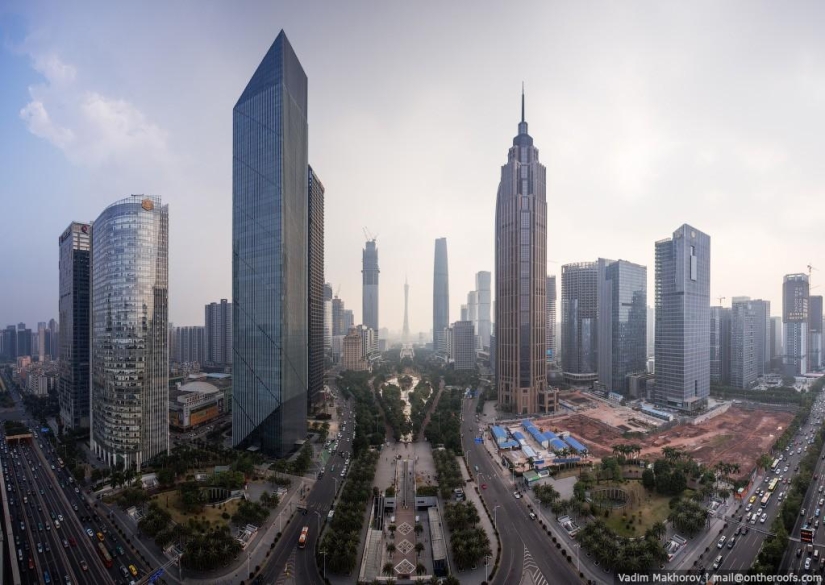
8.
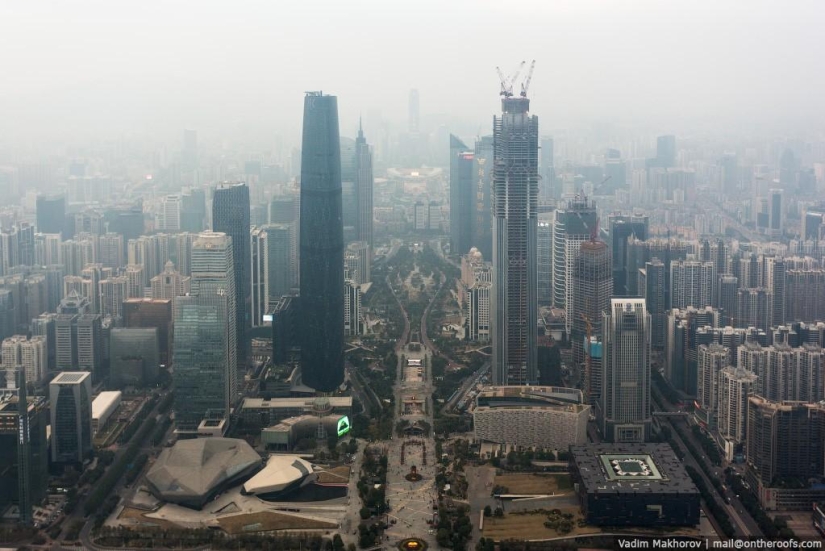
9. Canton Tower. The height of the TV tower is 600 meters, which makes it the second tallest TV tower in the world. Up to a height of 450 meters, the tower is built in the form of a combination of a hyperboloid carrier mesh shell and a central core. The hyperboloid design of the Guangzhou TV tower's mesh shell corresponds to the patent of 1899 by the Russian engineer V.G. Shukhov.
The Canton TV Tower is a huge attraction for tourists. At altitudes of 33, 116, 168 and 449 meters there are glazed observation decks, at an altitude of 488 meters there is an open observation platform. Rotating restaurants are located at altitudes of 418 and 428 meters, at an altitude of 407 meters there is a "VIP cafe".
View from the topmost observation deck of the city. Guangzhou is drowning in smog.

10. Viewing booths are visible from below, which rotate around the perimeter of the tower. There's also a free-fall attraction for the extra brave.

11. Despite the smog, the city is transformed at night.
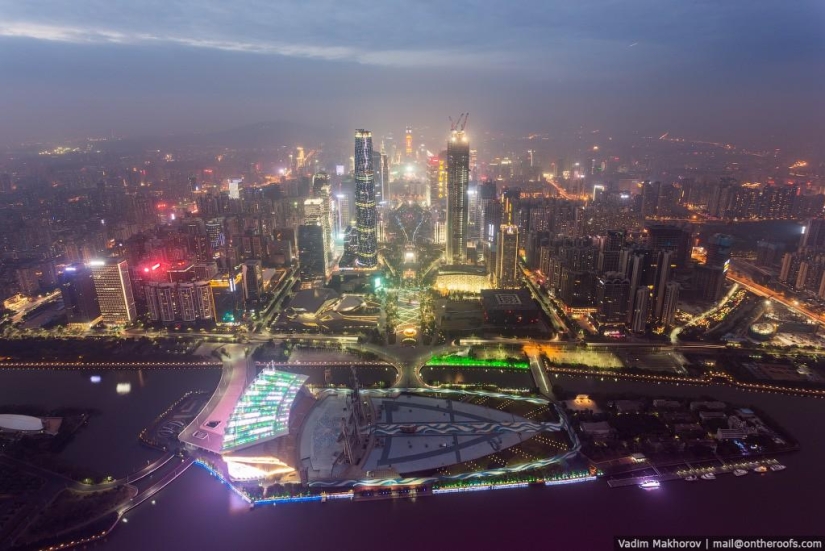
12. Skyscrapers in China are growing like mushrooms. I wonder how it will be in China in another 5-10 years.
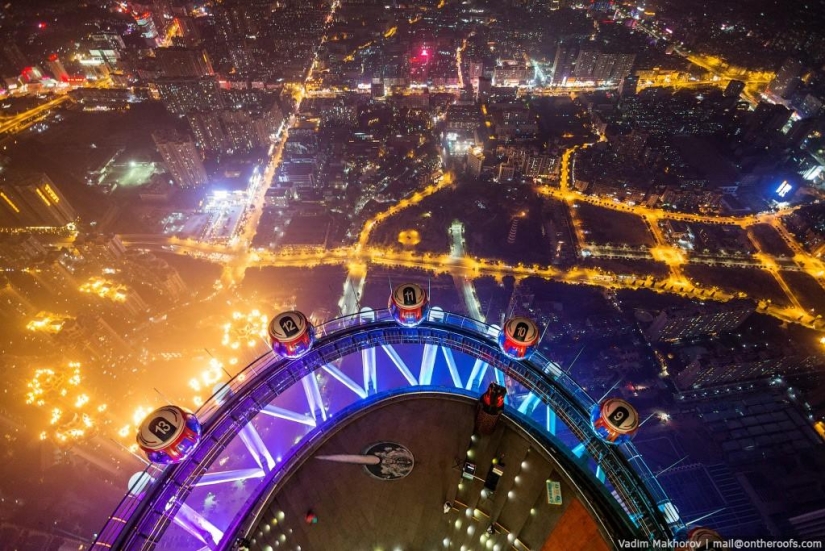
13.
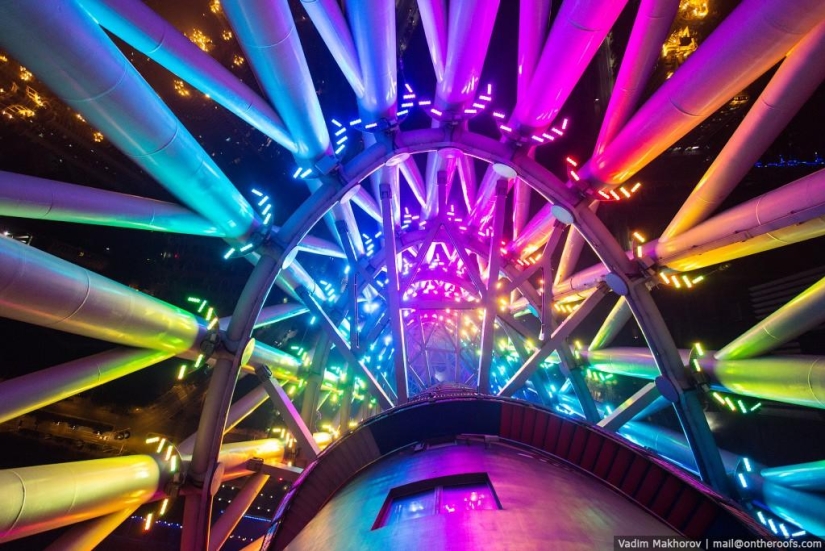
14. There is another attraction — climbing a spiral staircase around the central core of the tower. The lifting height is 136 meters. Moreover, if you entered from below, then there is no way back — the door closes behind you, the exit is only at the top.
Between climbing the roofs, one day we accidentally wandered into a slum going under demolition. It turned out to be quite an interesting place, which will soon be gone.
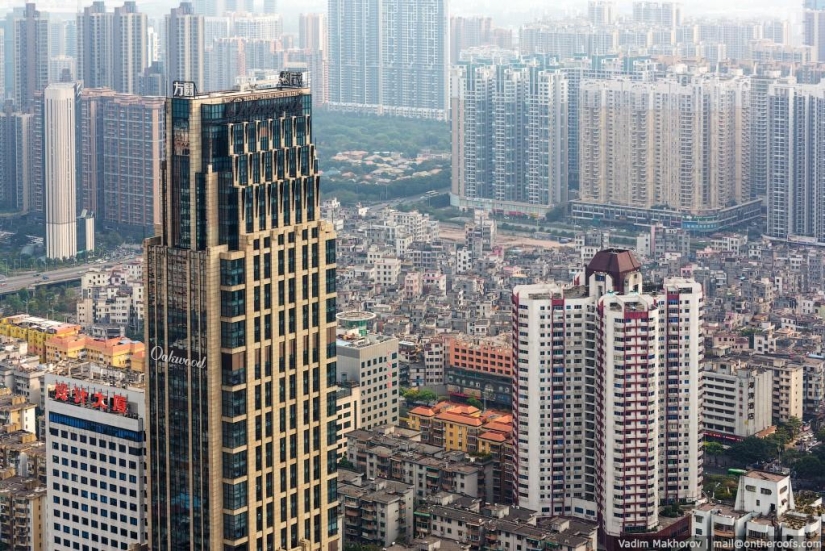
15. This quarter is called Xian Cun. In the picture you can see piles of concrete boxes — this is the slum.
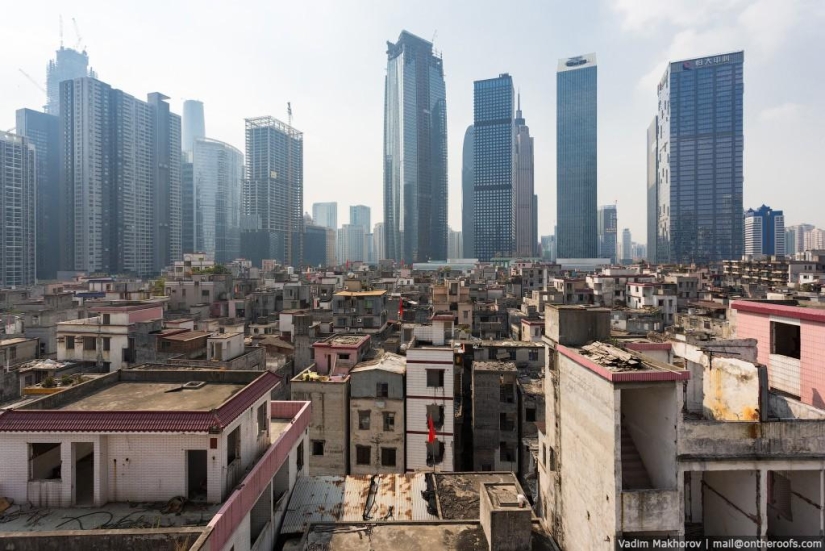
16. China is being built by leaps and bounds. As I said, skyscrapers are growing like mushrooms. Old residential blocks are demolished without hesitation and new ones are being built. Xiancun is one of the few blocks that have not yet been demolished and rebuilt. At the moment, the slum is a low-rise semi-abandoned and very dense building. The area is surrounded by a wall, police officers are on duty at the entrances to it.

17. Despite the fact that these houses seem completely abandoned, there is still life in this area.
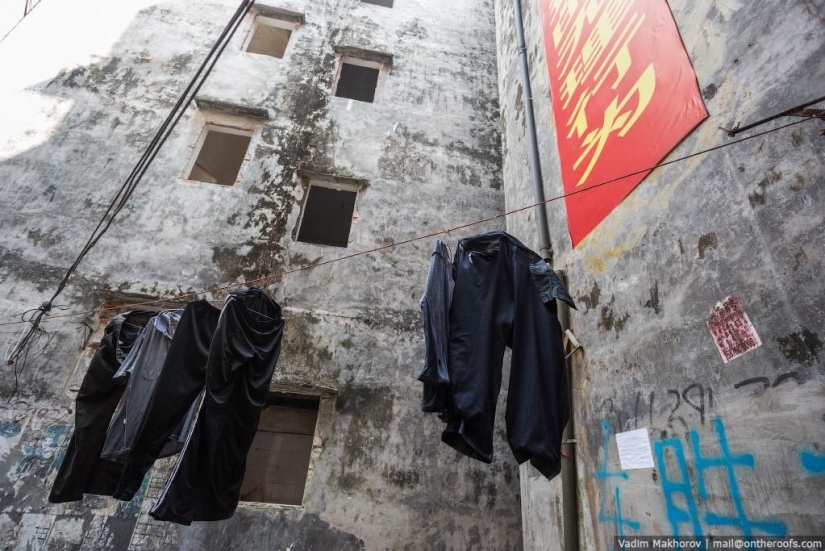
18.
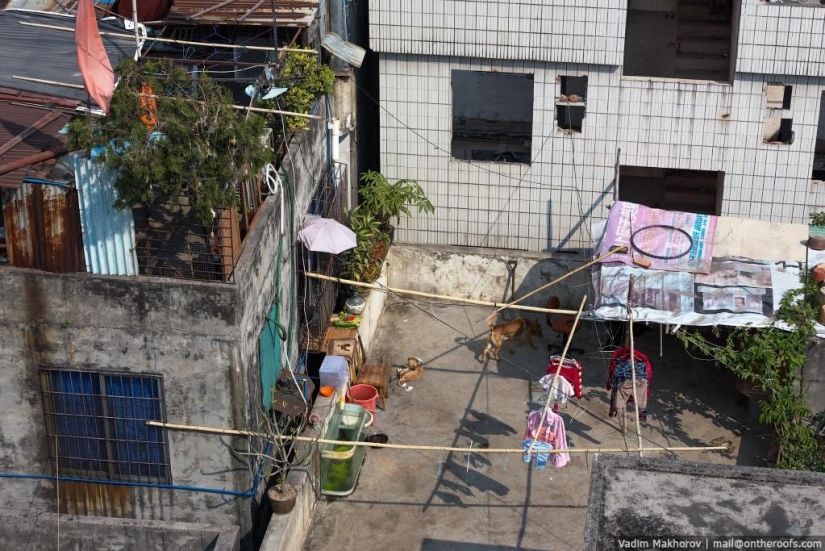
19. In fact, a real social problem is unfolding in this area. Not all residents want to leave and give up their homes for demolition.
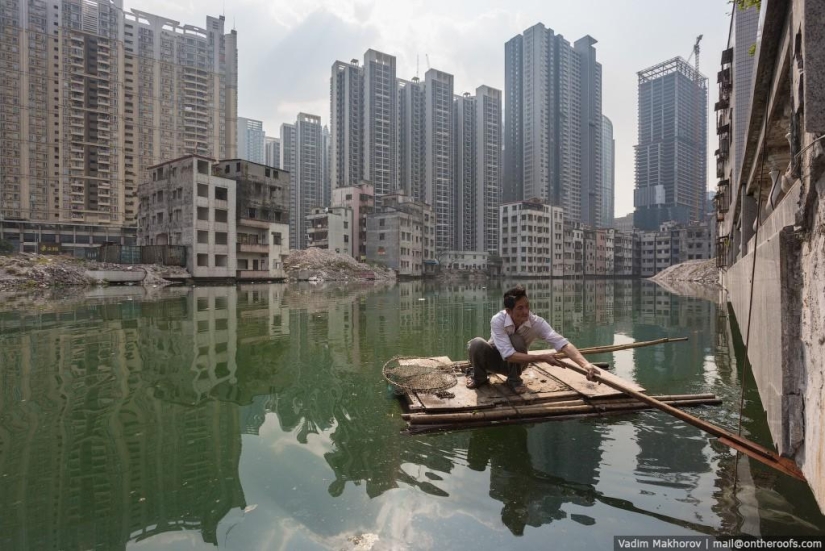
20. There is a confrontation between residents and the authorities. The former do not want to sign agreements on the demolition of their homes, and the latter are trying in every possible way to oust the former, complicating their lives — bulldozing markets, restricting garbage collection, prohibiting trade, etc.
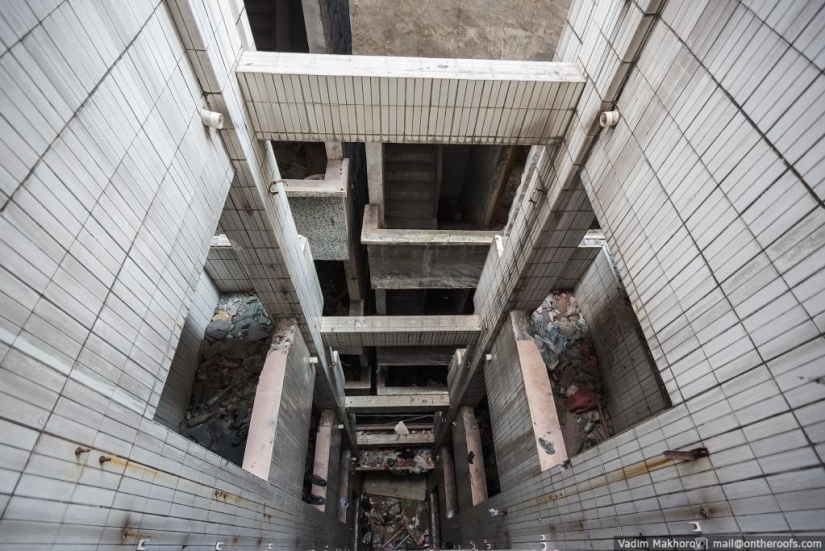
21.
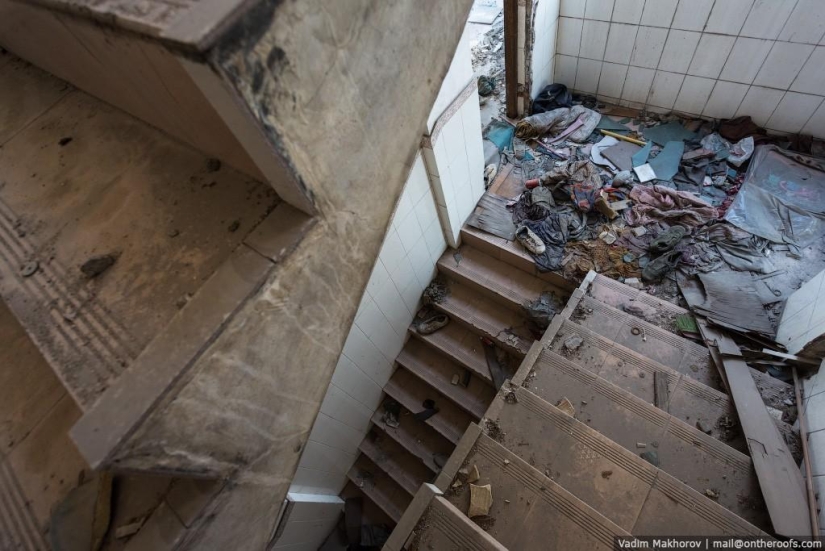
22.
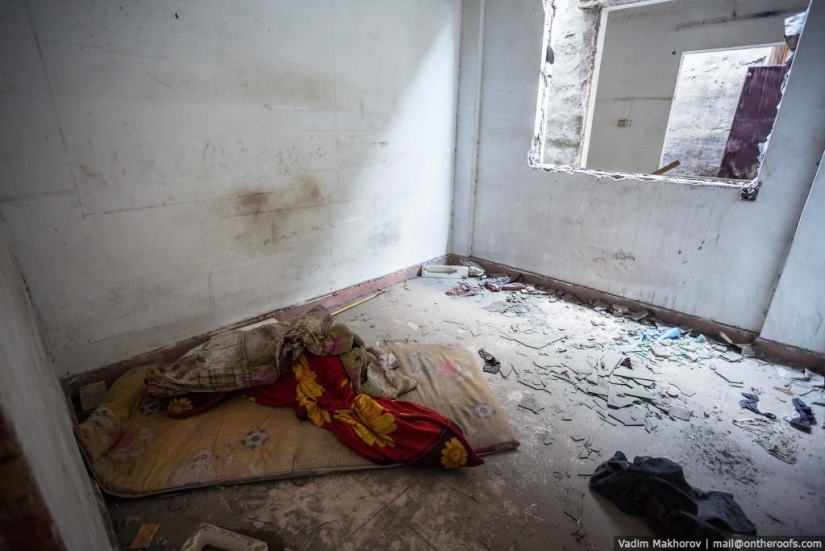
23. But despite all the protests, the number of people in the area is decreasing. It seems to me that in China it is useless to argue with the authorities in such matters. Here are some examples. In the photo you can find a homeless person.
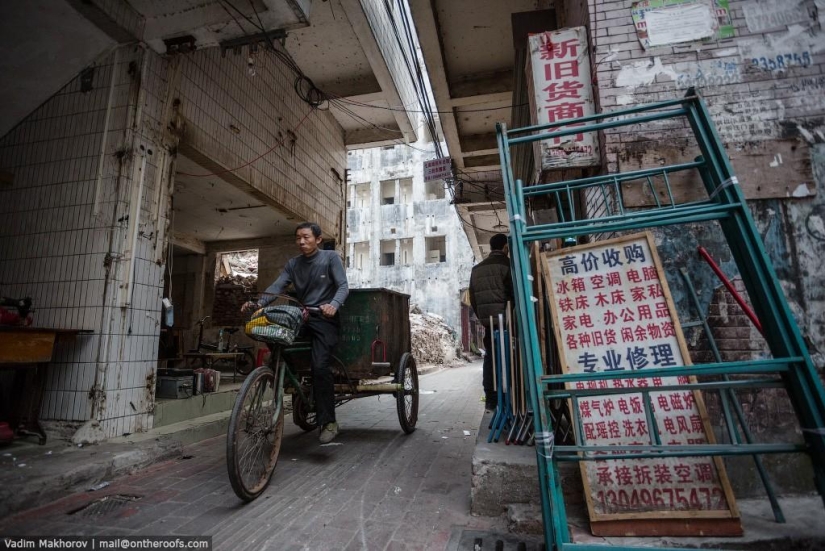
24. On the one hand, residents can be understood. They are mostly poor people, hard workers, they have lived here all their lives, and this land belongs to their ancestors. But on the other hand, the houses in which they lived were already in disrepair, poor drainage, lack of normal sewerage and very dense buildings, where streets are formed not by roads, but by gaps between houses, the width of which is less than a meter. The living conditions here were very bad — all this does not compare with the rest of the "new" China.
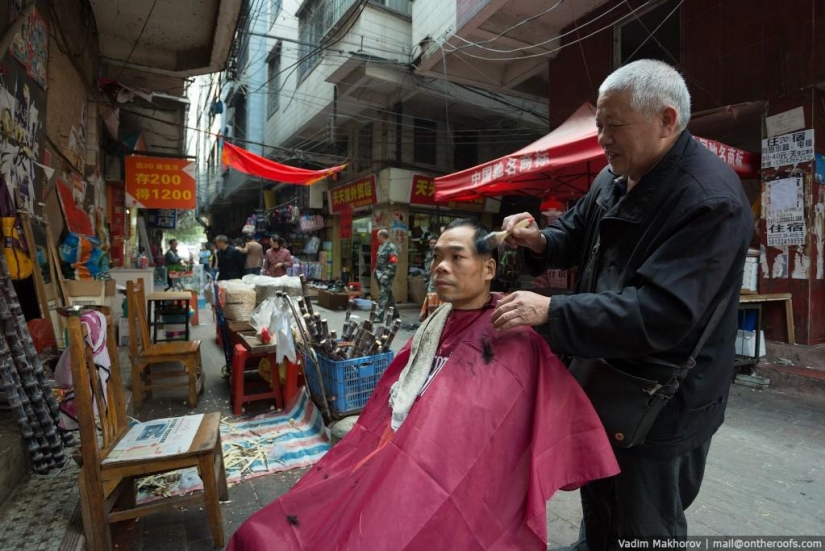
25. Another interesting point. The bulk of those people who have already moved out of the slums are waiting for relocation to new homes. But to build these houses, you need to demolish the old ones. And it turns out that the protesting residents, without moving out of the slums, create problems not only for the authorities, but also for ordinary people who are waiting for their apartments.
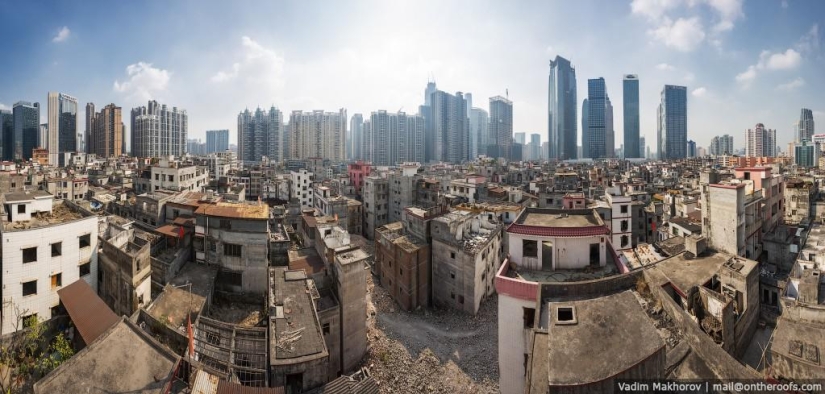
26. Panorama of the area.
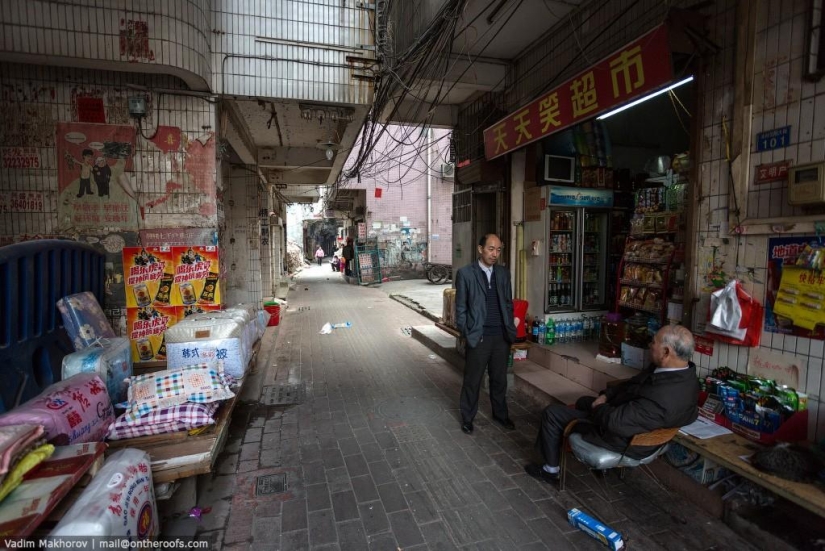
27. Shop.

28. Below will be photos of slums without descriptions.
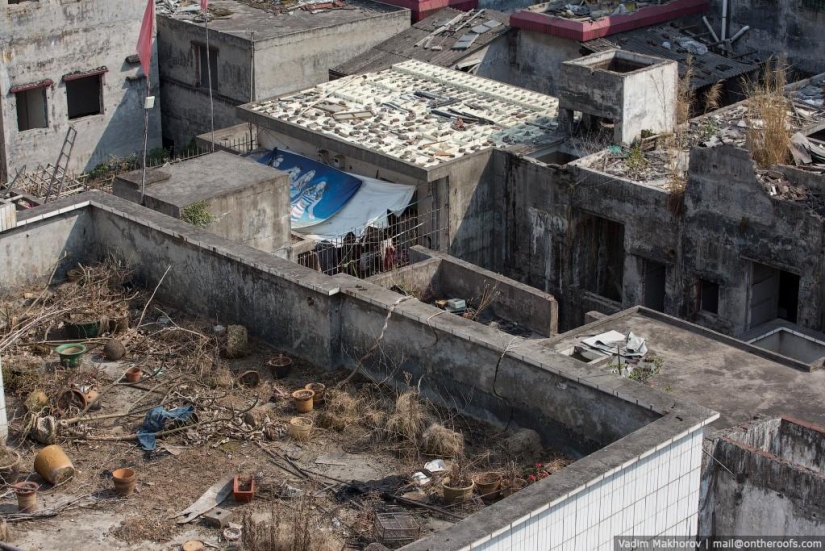
29.
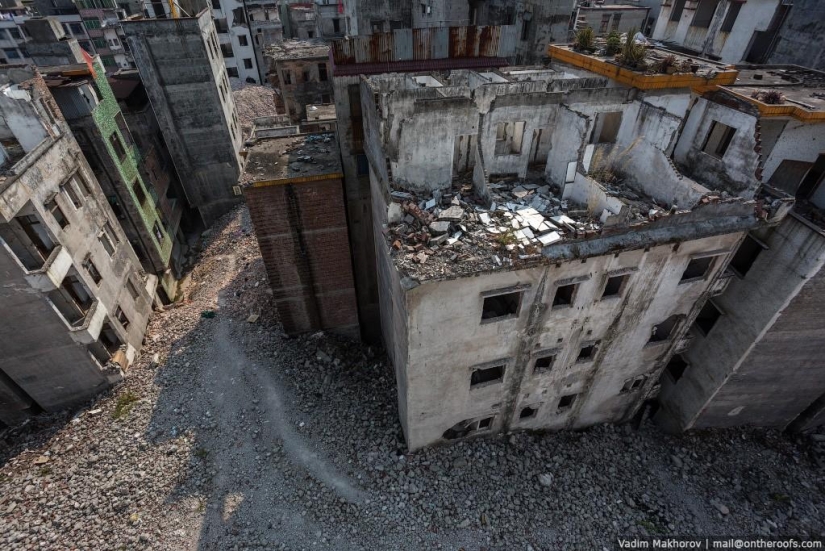
30.

31.
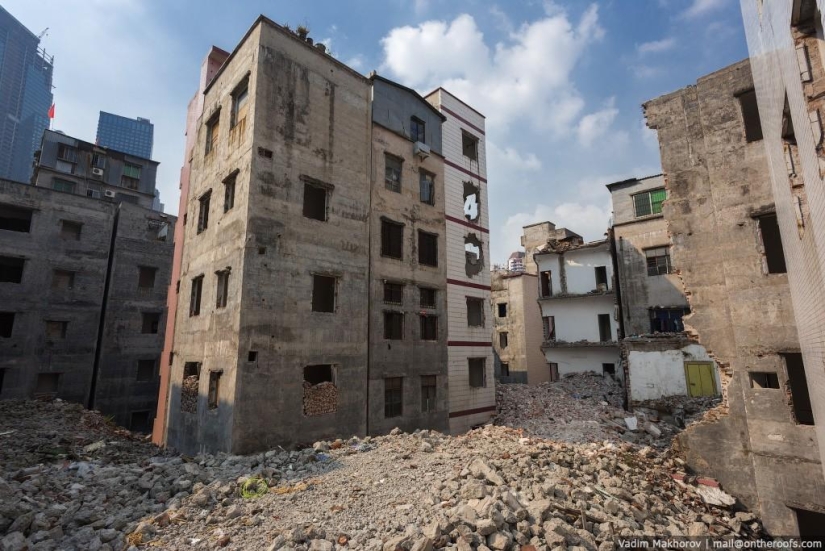
32.
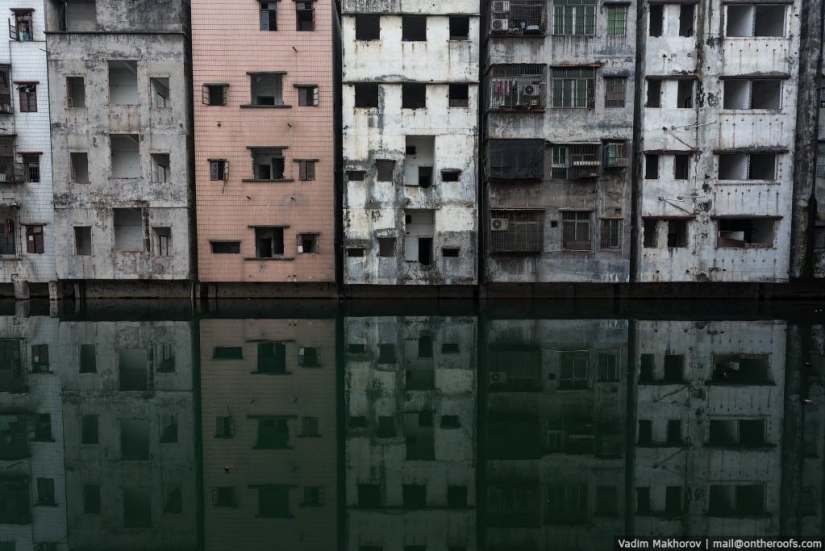
33.
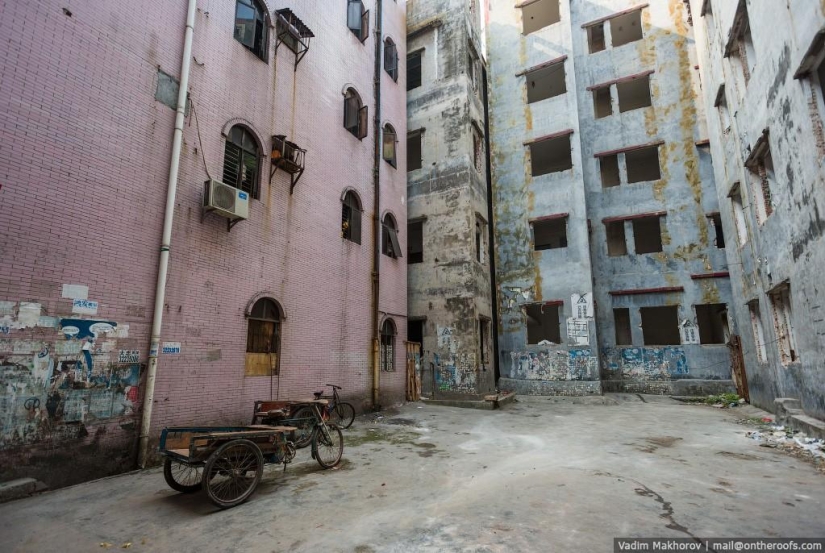
34.
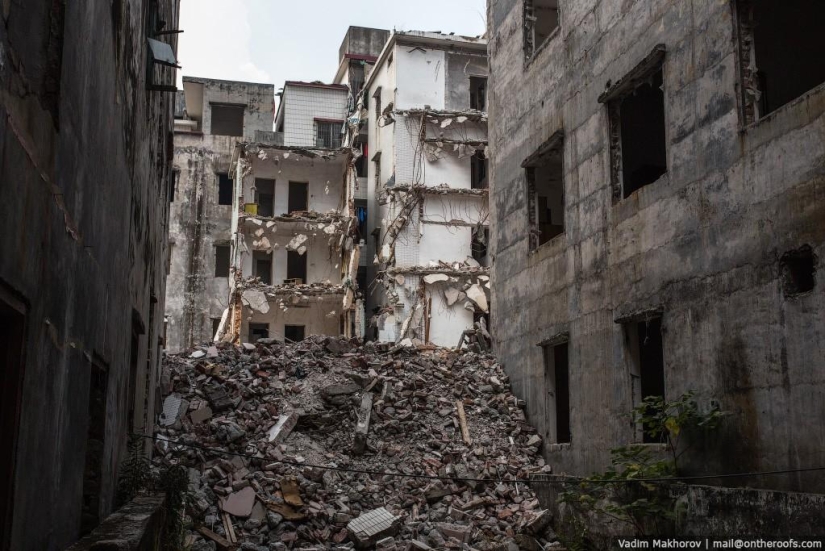
35.
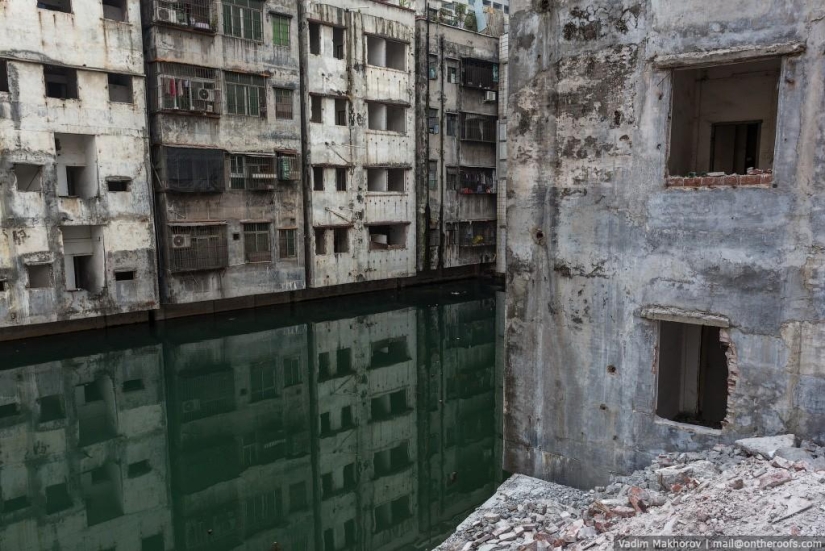
36.
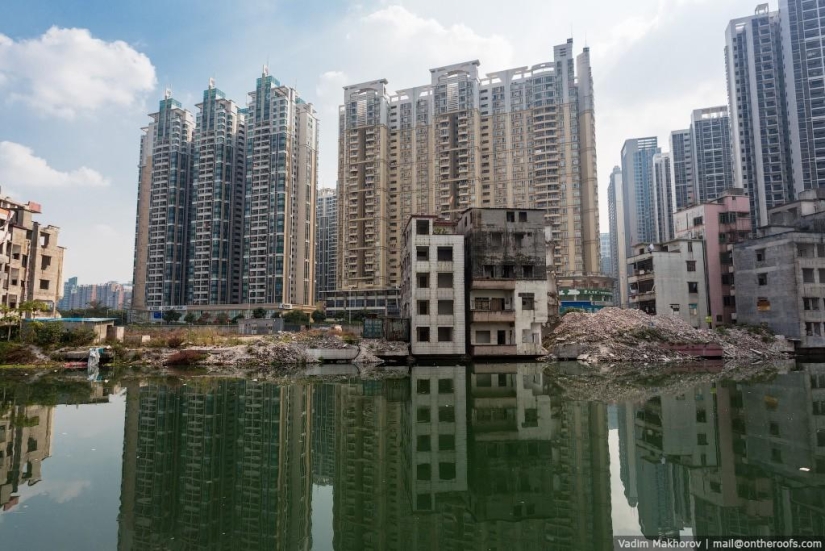
37.
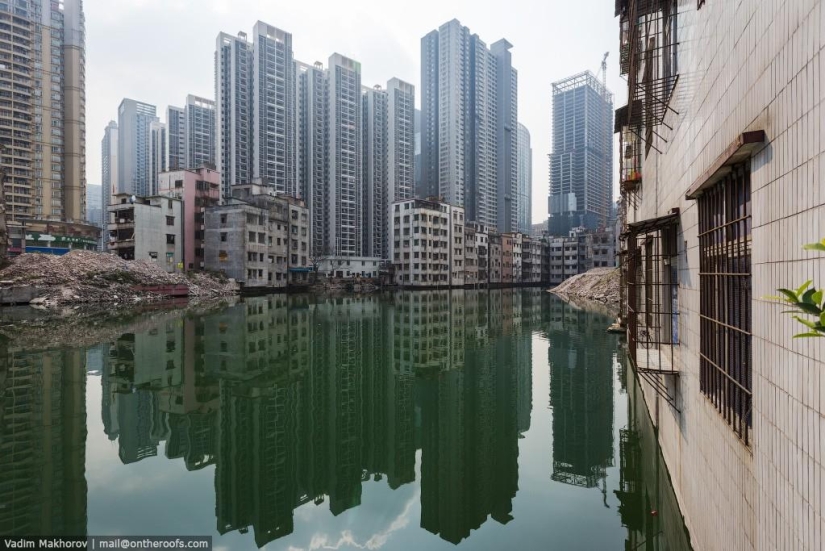
38. What do you think about it? Could you live like this?
Keywords: Guangzhou | China | Roof | Roof rails | Slums
Post News ArticleRecent articles

What kind of wedding traditions do not happen! The Scots pour dirty slush over the bride, some peoples of India have decided to get ...

Every parent who has a toddler of kindergarten age growing up knows that the most terrible sound in the house, which causes ...
Related articles

We are accustomed to the fact that on the packaging of tea, write "loose" and rarely think about what the word means. Meanwhile, ...

Human intervention in the affairs of nature is extremely rarely successful. Especially a lot of trouble was brought to the ...

The sea is still, you are a woman or a man, if you can hold in their hands an army of 70,000. Chinese Chin si could — she started ...

Reddit users gathered once and let's brag about who and what they treat in school canteens. Both the students themselves and their ...